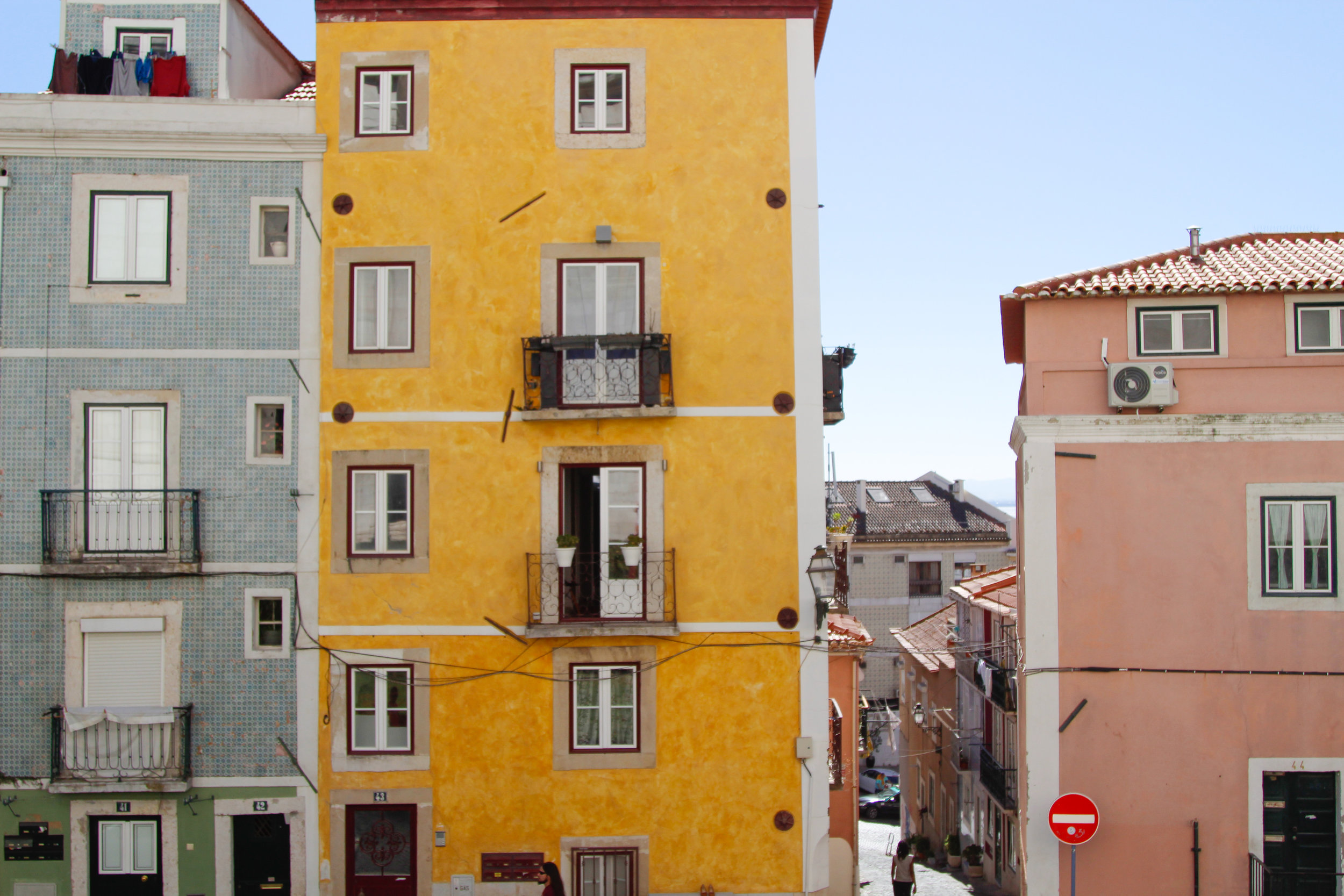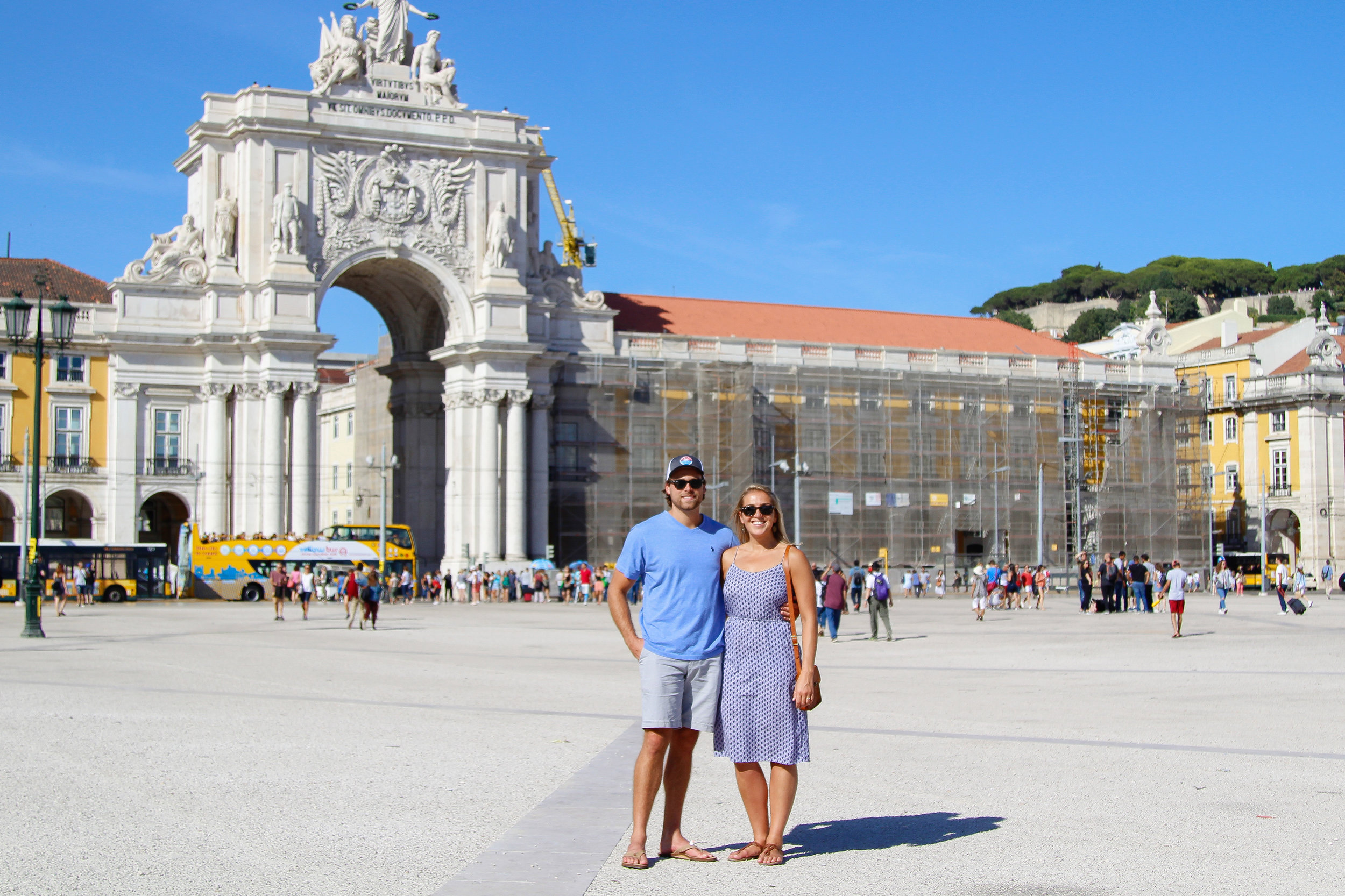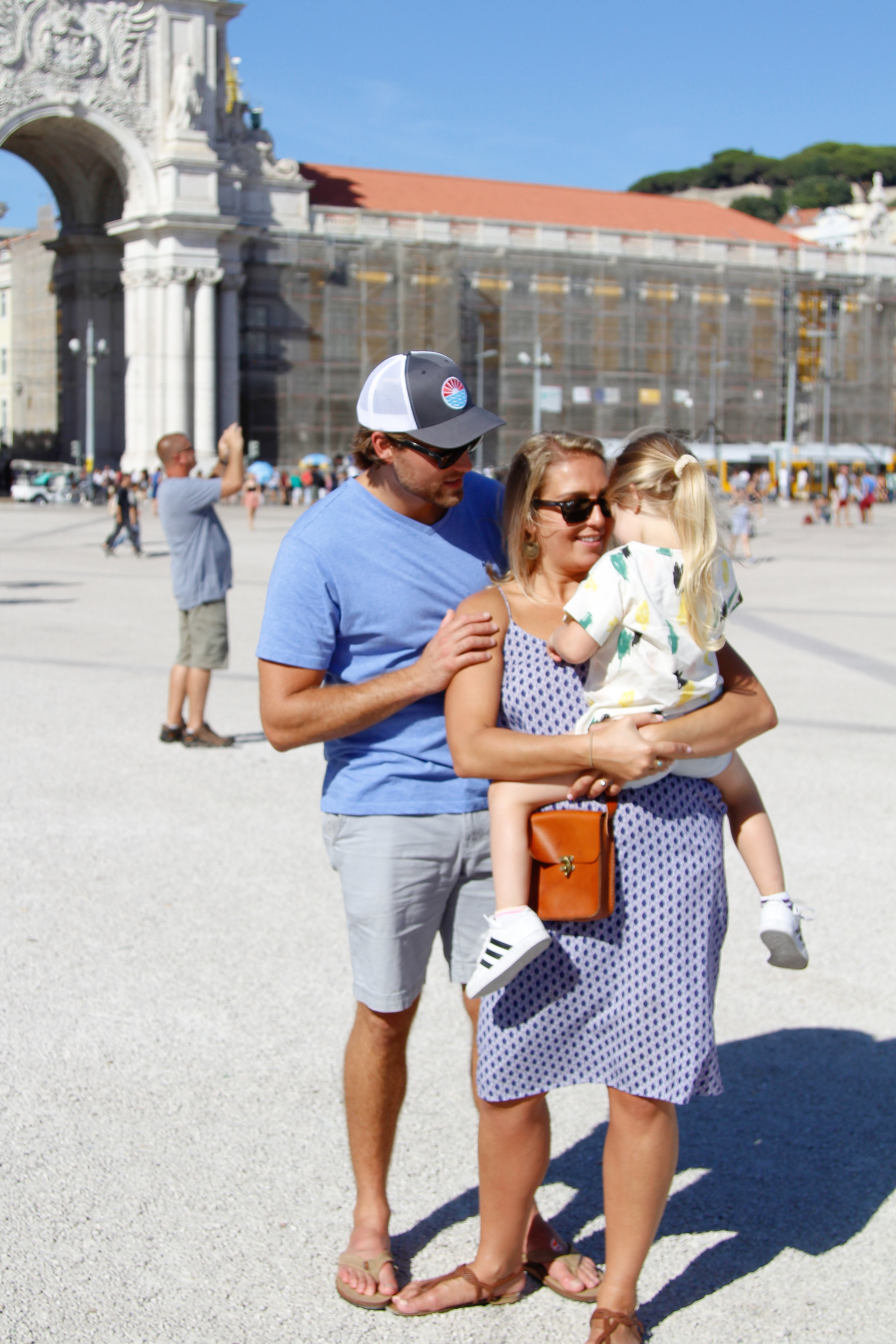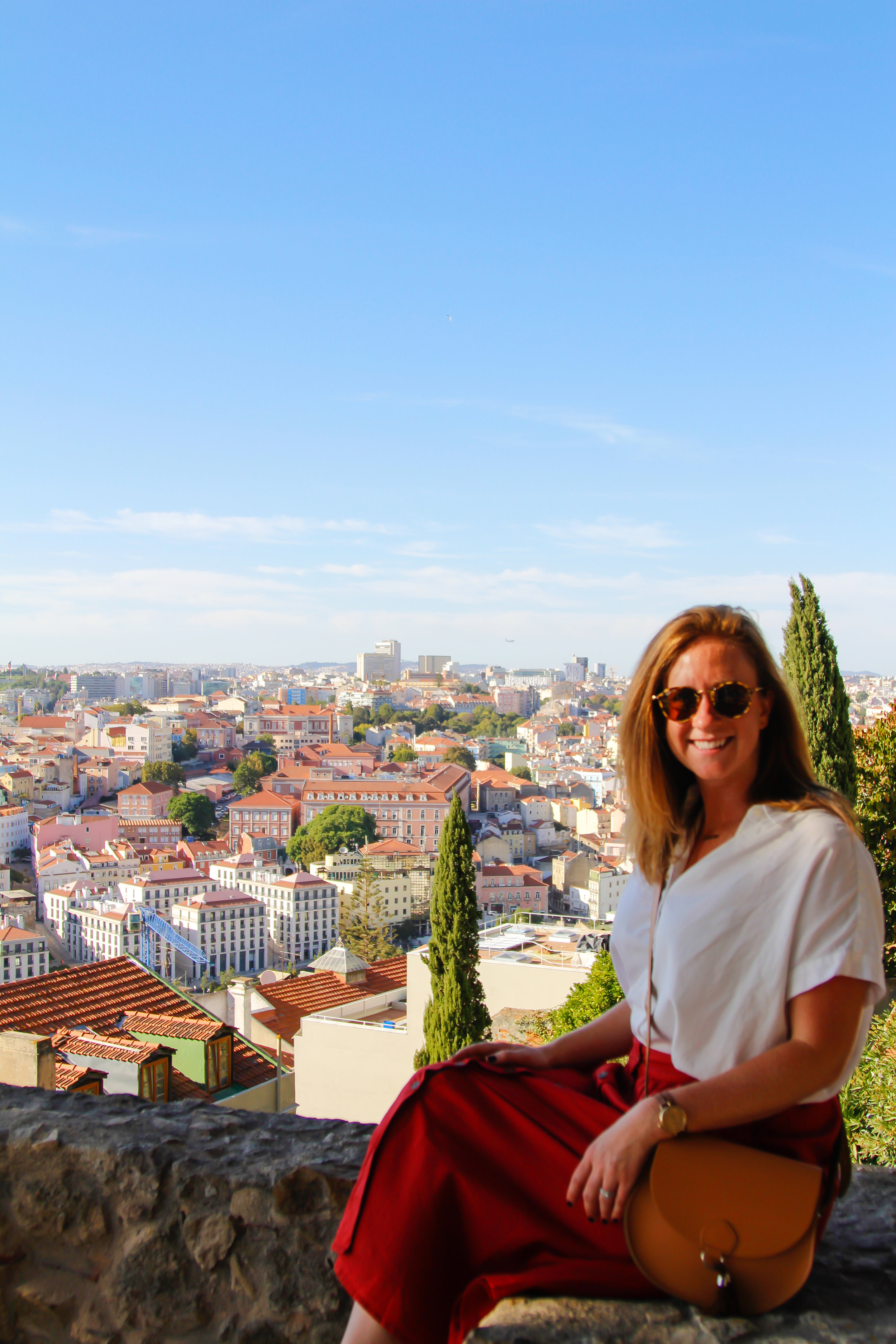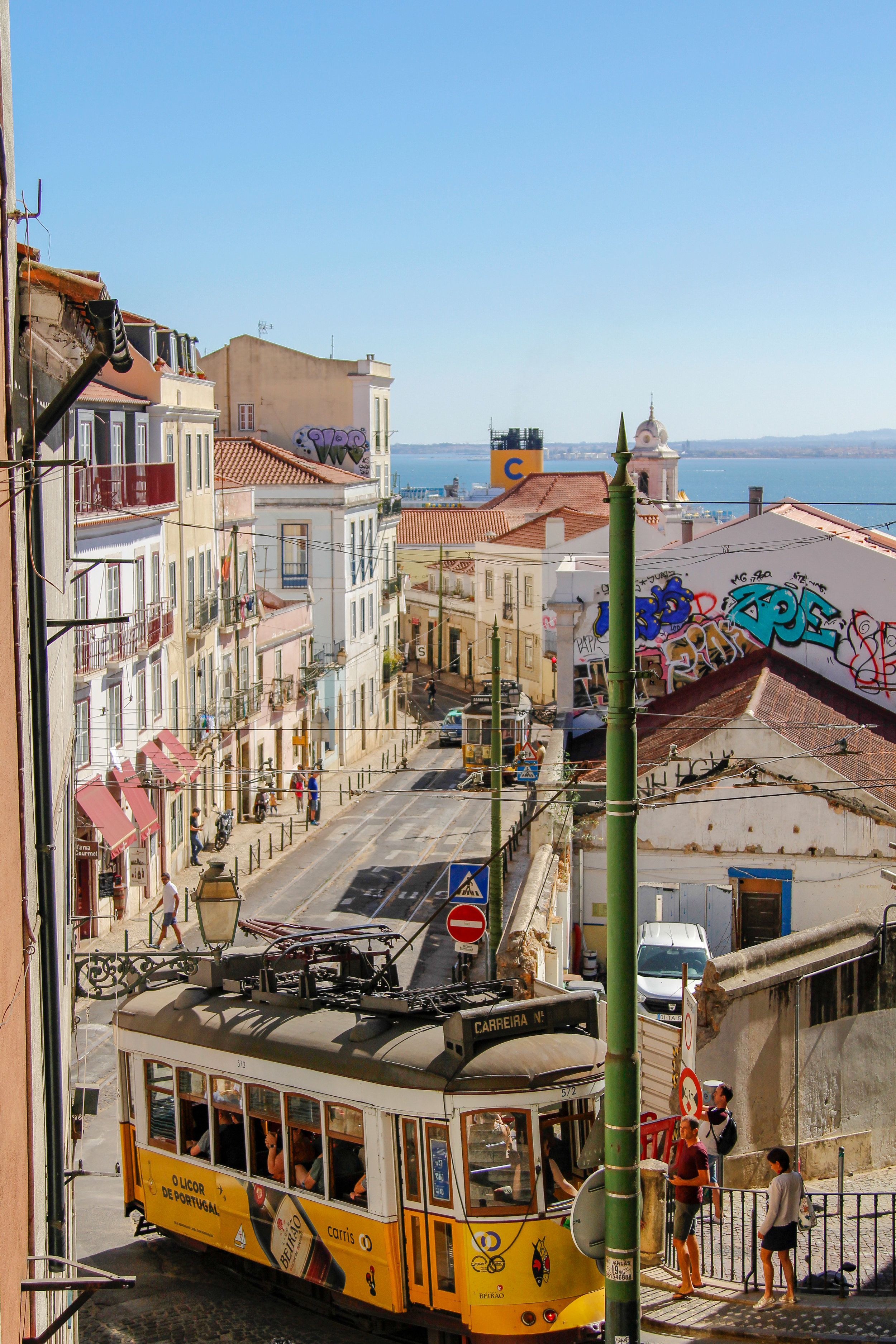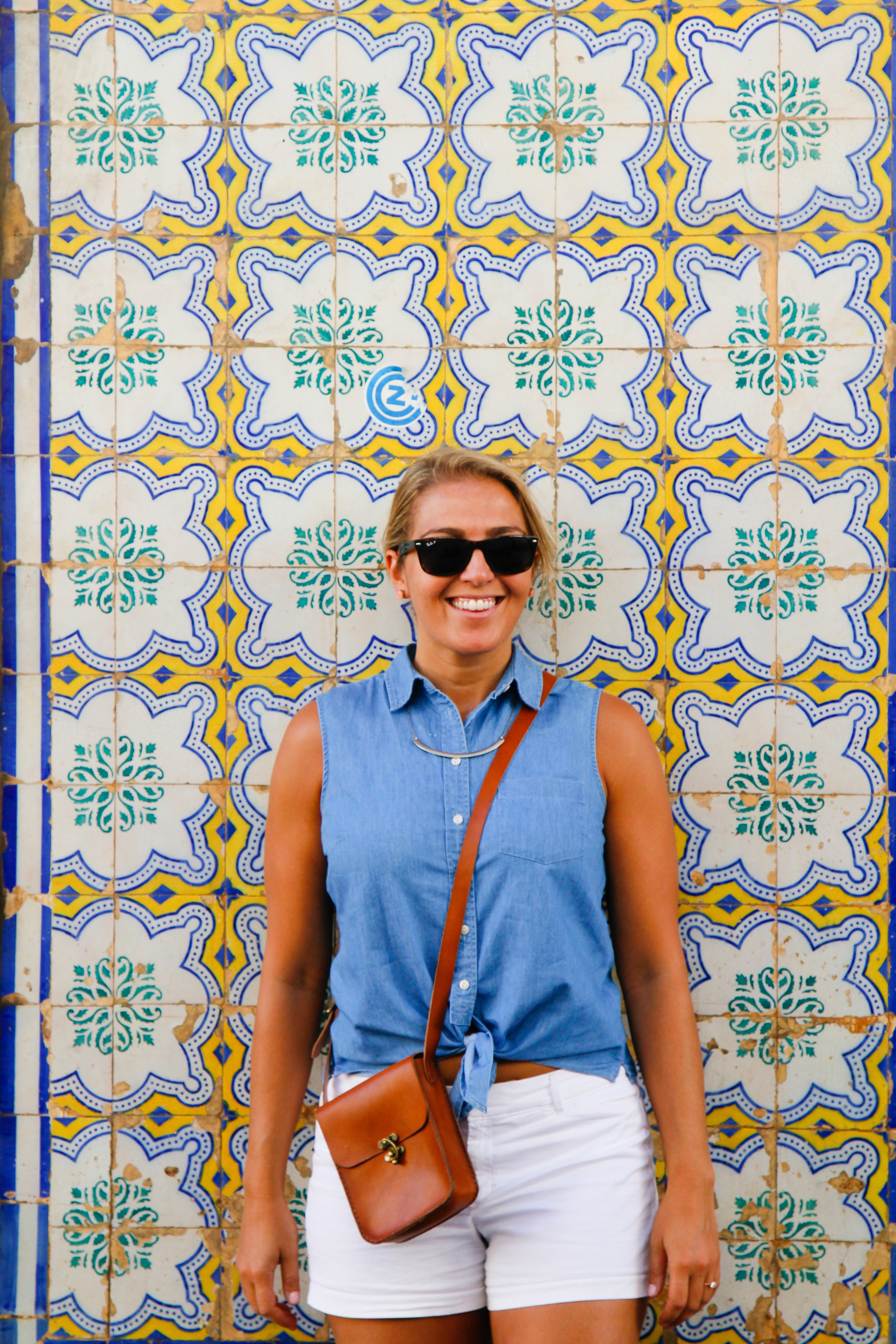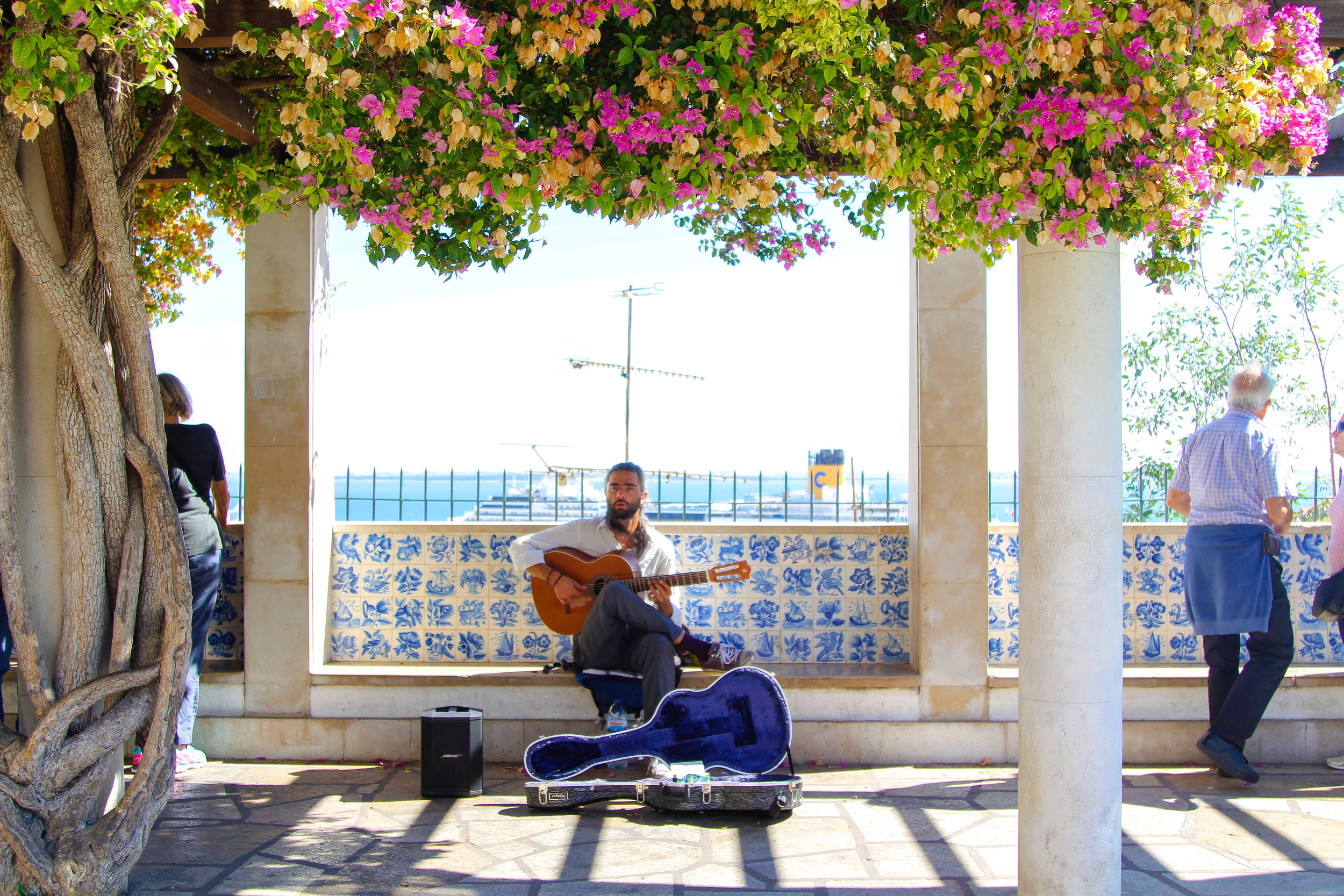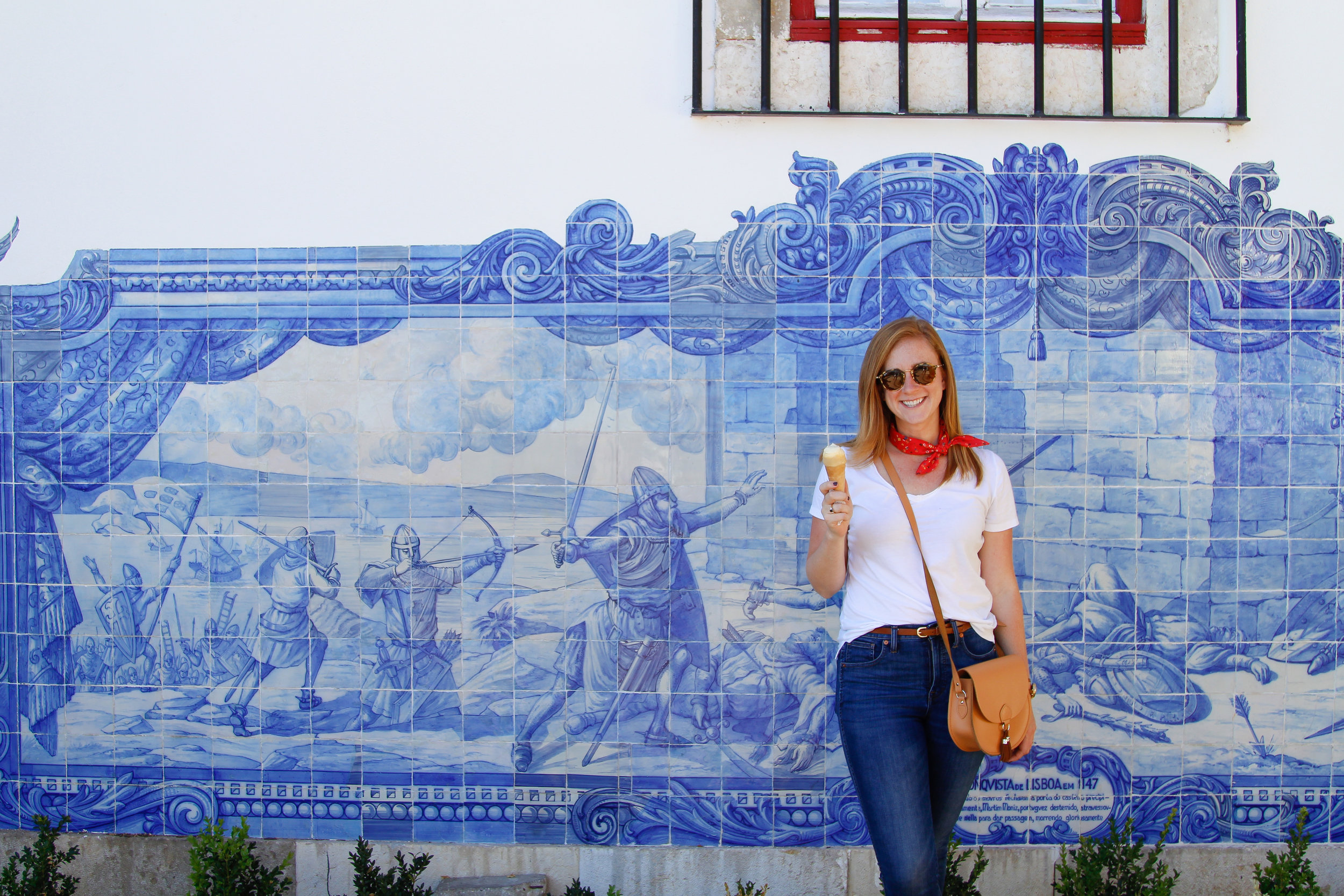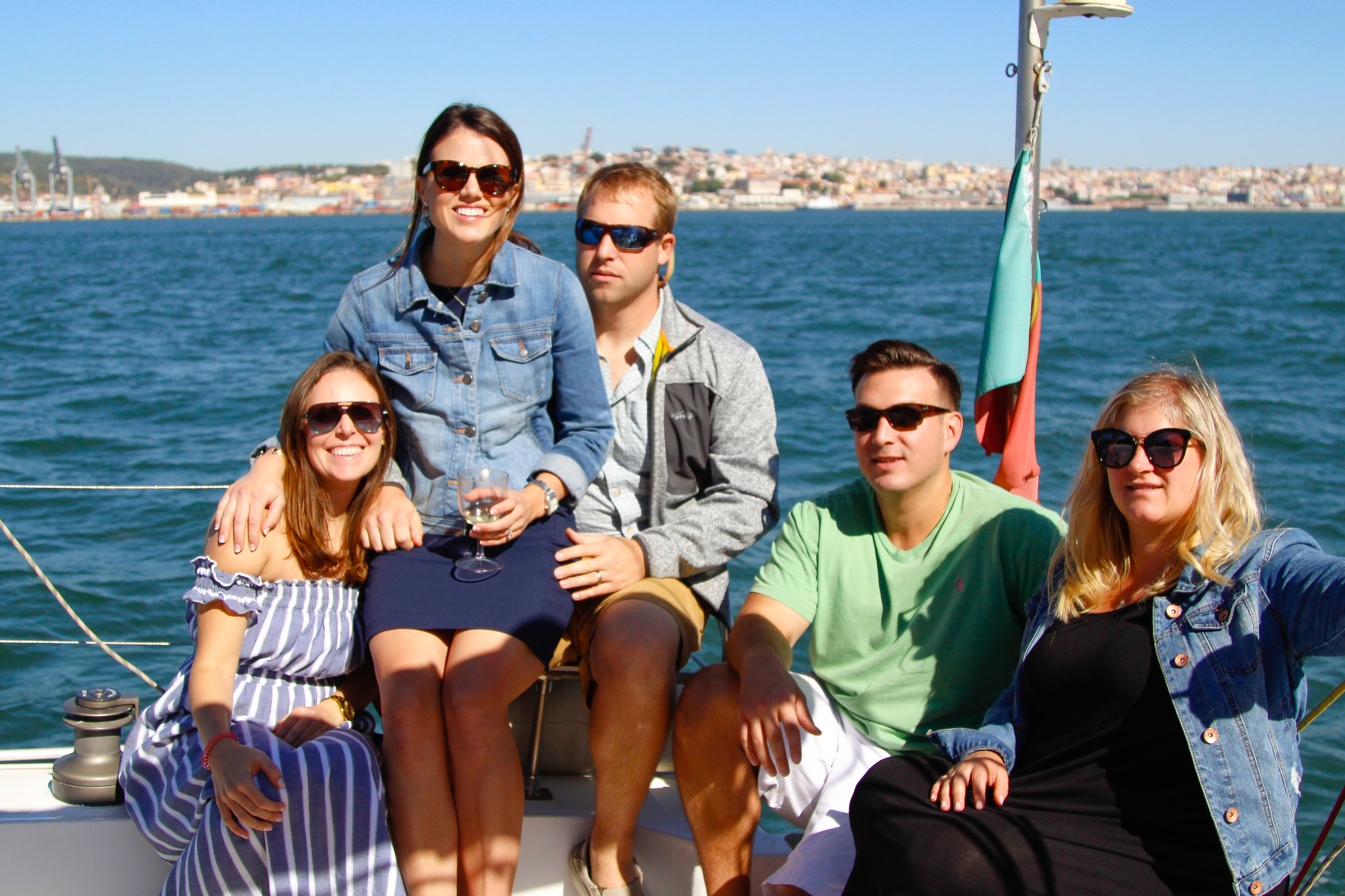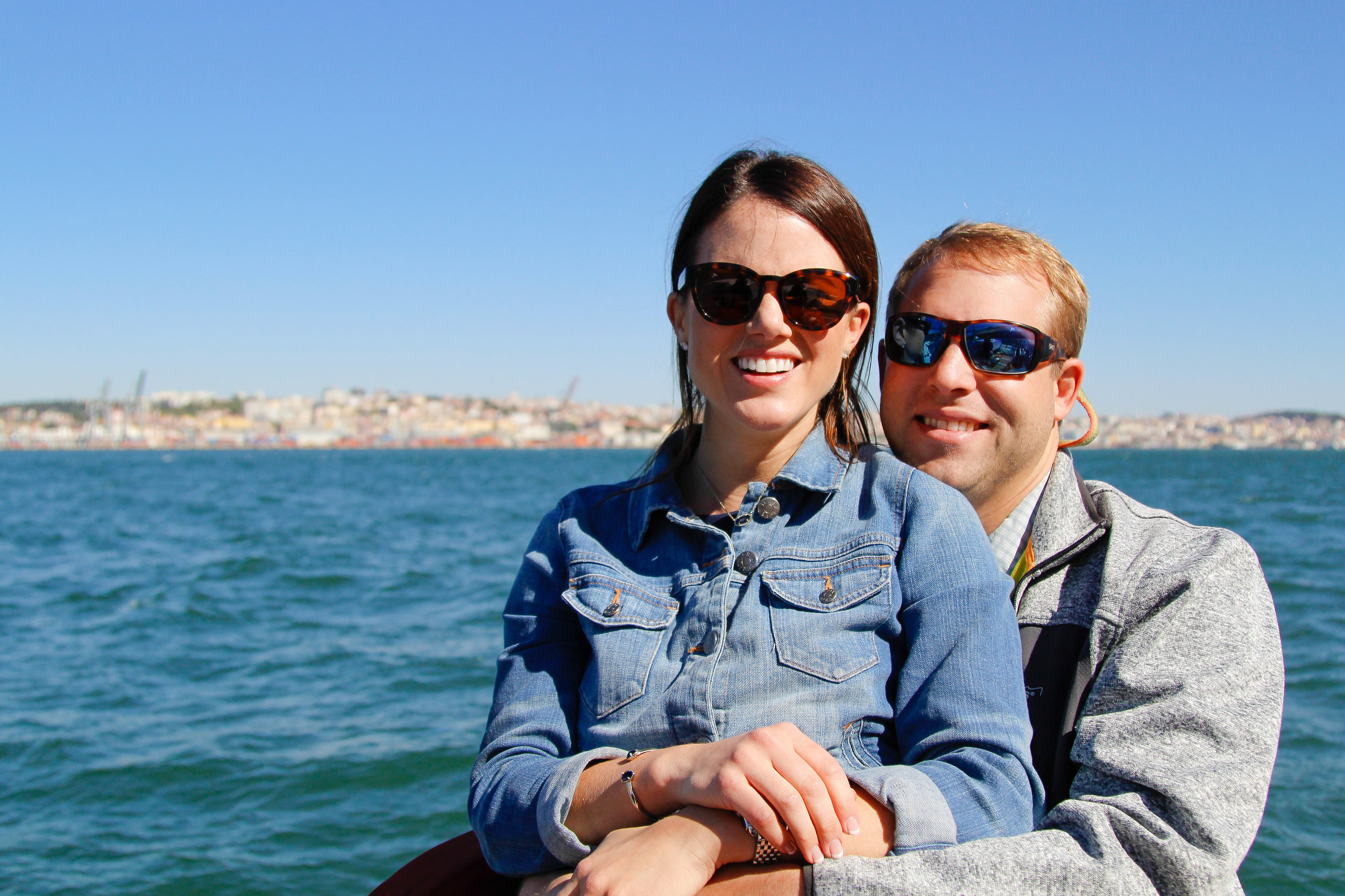In the beginning of the month, I traveled to Portugal for my dear friend Amelia’s wedding. She and I became friends when we were eleven or twelve, and despite a rocky start (I was shy, but came off rude), have been close ever since. Amelia and I went through many, many years of awkwardness together, and share a mutual love of love. She recently found the love of her life, Blake, and their wedding brought a group of 60 family and friends across the ocean to Portugal. We began the trip with a weekend in Lisbon and then spent the remainder of our week in Colares, 45 minutes north of the city in the Sintra region.
A small group of us rented an Airbnb in the Alfama neighborhood, one of Lisbon’s oldest districts. Most of the city was wiped out in the Great Lisbon Earthquake and Tsunami of 1755. Alfama, situated high on top of a solid dense rock foundation, was spared. Eighty-five percent of Lisbon’s buildings were destroyed in the earthquake. Many of those buildings were significant—palaces, libraries—and distinctive to Portuguese architecture. My assumption is that, in rebuilding itself, Lisbon took on the characteristics of other nearby countries and cities; when I was there, I kept thinking “this reminds me of Nice,” or “this reminds me of San Francisco.” I couldn’t quite put my finger on anything that felt distinctly Portuguese.
Alfama, with its slippery maze of cobbled winding streets and stunning views at every corner, occupied most of our time in Lisbon. This just means one thing: one day, I’ll have to go back and explore more of the city!
I started my time there with an early morning run along the Tagus River; seemingly the only flat route in town. It gave me the opportunity to see Lisbon before it was taken over by hordes of people—when traveling, I always recommend getting out between 7 and 9am; it’s so much more pleasant to explore a place without crowds.
Once Amelia, Blake, and their friend Alex came in, we meandered to the Time Out Market at Mercado da Ribeira for lunch. Time Out Market is a food court run by its namesake, Time Out Lisboa Magazine, and features 24 restaurants, 8 bars, a dozen shops, and, at night, functions as a high-end music venue. Some stalls rotate and others stay for years, but they’re each a smaller front to the actual bakeries or restaurants that are placed throughout the city. It’s a good opportunity to try local specialties, like tinned sardines and pasteis de nata, or opt for a bigger meal, like octopus salad or curry, while sipping on $5 vinho verde (my new favorite type of wine). I will warn you, though, that this place is crowded. It was a little too overwhelming for me. If you don’t mind crowds, then you’re fine, and this place is certainly worth it. If you don’t like crowds…maybe try to visit the actual restaurants represented in Time Out Market at their bigger, standalone locations.
After the market we walked through Praça do Comércio, one of Lisbon’s main squares. It’s along the waterfront and is flanked by painted buildings and outdoor cafes, two towers reminiscent of the Ribeira Palace—which was destroyed in the earthquake, and opens up to the Tagus River. At its center is a bronze statue of King José I, who was inaugurated in 1755. It was designed by Joaquim Machado de Castro, Portugal’s foremost sculptor of the time, and was the first monumental statue dedicated to a king in Lisbon.
From the Praça do Comércio we continued on up and up and up to the São Jorge Castle, past graffitied walls and crooning musicians. The fortification was built by the Moors in the mid-11th century and transformed into a royal palace in the 13th century. It held coronations, festivities, and important meetings well into the 16th century. After that, it became military barracks, and in the 20th century, became a national monument.
Today, the site is mostly made up of ruins and walls that you can walk along, but it does offer incredible views of the city stretching out below.
Later that evening, we tried to go to the rooftop bar at Memmo Alfama, but it was full. So instead we found a small market and grabbed a few beers—Sagres and Super Bock—a bottle of rosé, and a bag of Ruffles Sabor a Presunto, and enjoyed them with friends outside on the Miradouro das Portas do Sol Observation Deck. We caught the sunset while sipping wine from plastic cups, the River Tagus stretching out in front, blue and white tiles covering the walls behind, and pink bougainvillea flowing down over the pergola above us. It’s one of my favorite memories from the trip.
From there we slipped and slid our way down the hill to Prado, a restaurant dripping with greenery and focused around serving fresh, locally sourced tapas. We ate squid and cockles and pork tenderloin and cauliflower. We drank bottles of effervescent vinho verde. We started to make our way home, the jet lag catching up, but decided to stop for another bottle of vinho verde. We walked on again, and stopped for a bottle again. Our last stop was at a sidewalk cafe where we laughed with our server who, when we told him we were in Portugal for Blake and Amelia’s wedding, replied, “I love getting married! I’ve been married three times. I can’t wait to get married again!”
Despite the abundance of vinho verde the night before, the next day in Lisbon was bright and sunny and happy. In walking up to the Panteão Nacional, we happened upon a mural by André Saraiva in São Vicente de Fora. Finished in 2016, it’s the biggest urban art installation in Lisbon and boasts a 9,300 sq m wall covered with more than 50,000 handmade tiles. It was colorful and playful and made for the perfect background to our pictures!
After walking around a bit we picked up our friends Allie and Ryan, fresh off the plane from North Carolina. They dropped their bags and we continued on to explore Alfama, stopping for drinks and small plates in a square, and later heading out to dinner at Chafariz do Vinho, a wine and tapas bar located in an old water aqueduct.
More friends started arriving the next morning, and as Amelia and Blake took off to their wedding venue site, a group of us picked up rental cars and then chartered a catamaran on the Tagus. Despite some stress resulting from a rental car fiasco, the catamaran sail was the perfect way to bring our time in Lisbon to a close. Afterwards, we enjoyed one final meal of fish and potatoes at a restaurant along the river, and then headed to our next destination: Colares.
Overall, Lisbon felt raw. Vibrant. Unedited, like the locals aren’t quite sure yet what to make of tourists. It’s where old meets new and cultures clash together. The homes are peachy orange, robin’s egg blue, red roofed and tiled. There’s graffiti on the walls and laundry hanging from the windows and dramatic musicians playing Fado in the shade. It feels old-worldly and Mediterranean and...real. I encourage you to go, and, since there’s so much more of the city to explore, can’t wait to go back myself.

